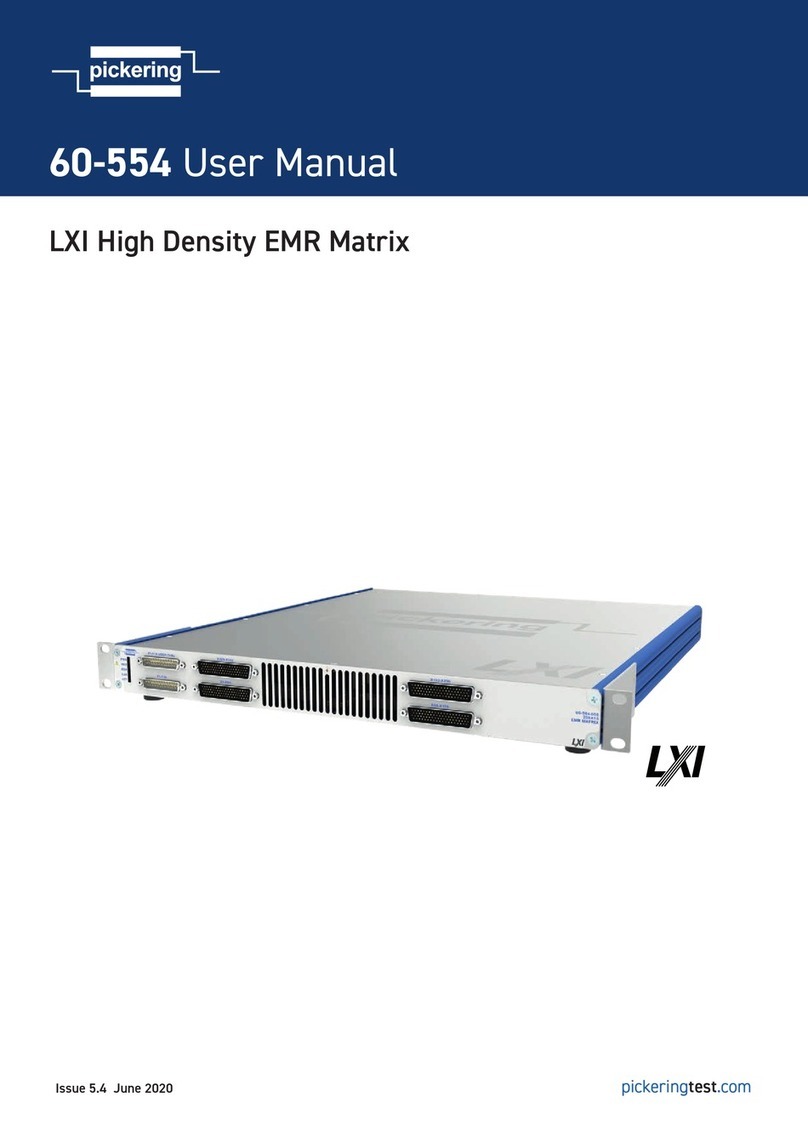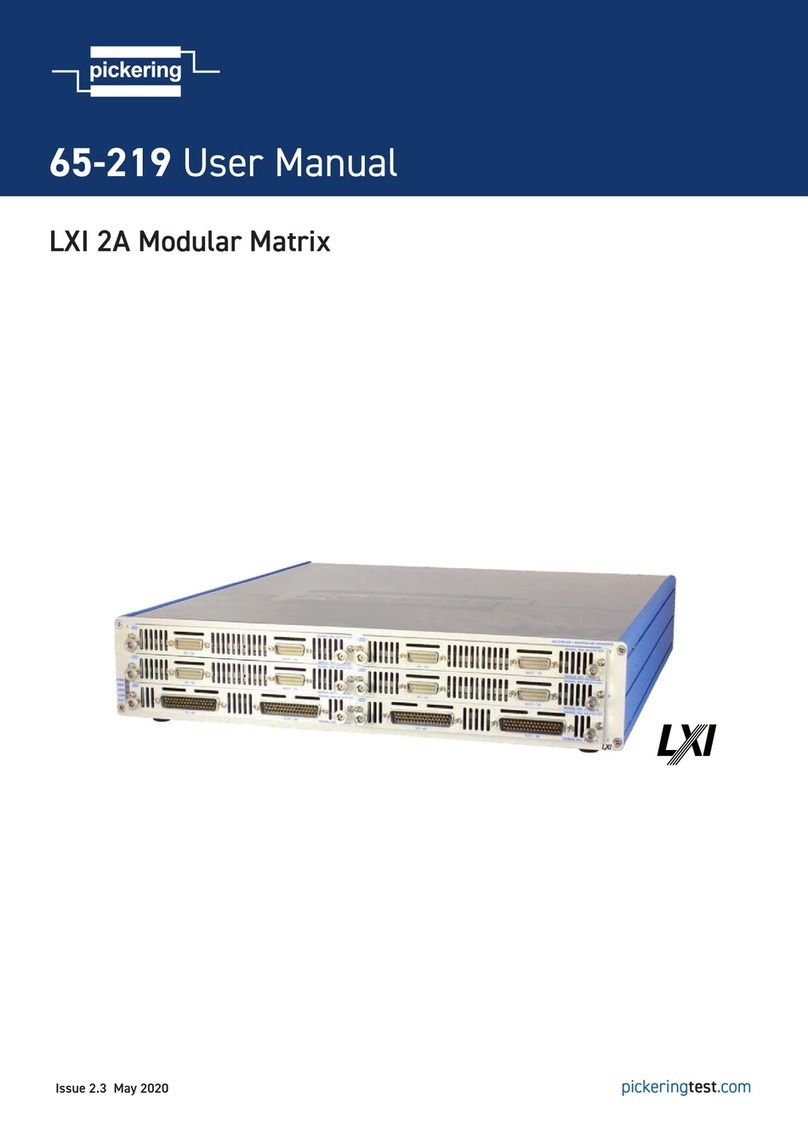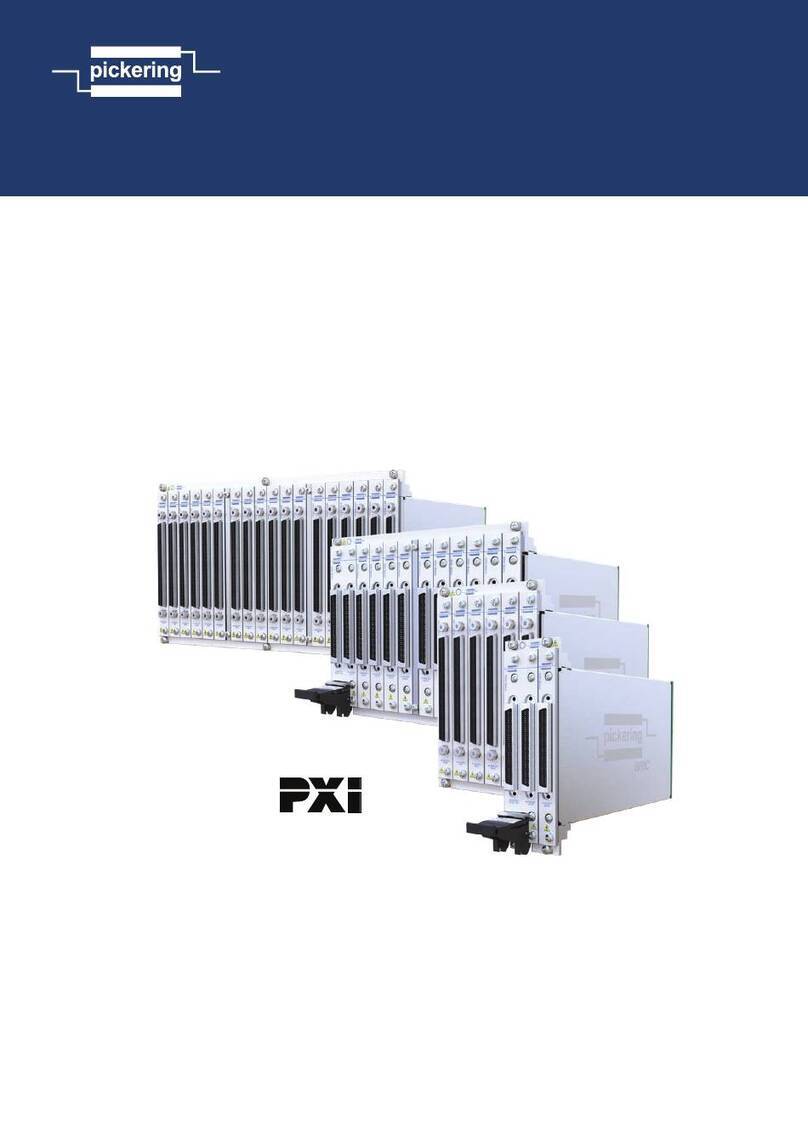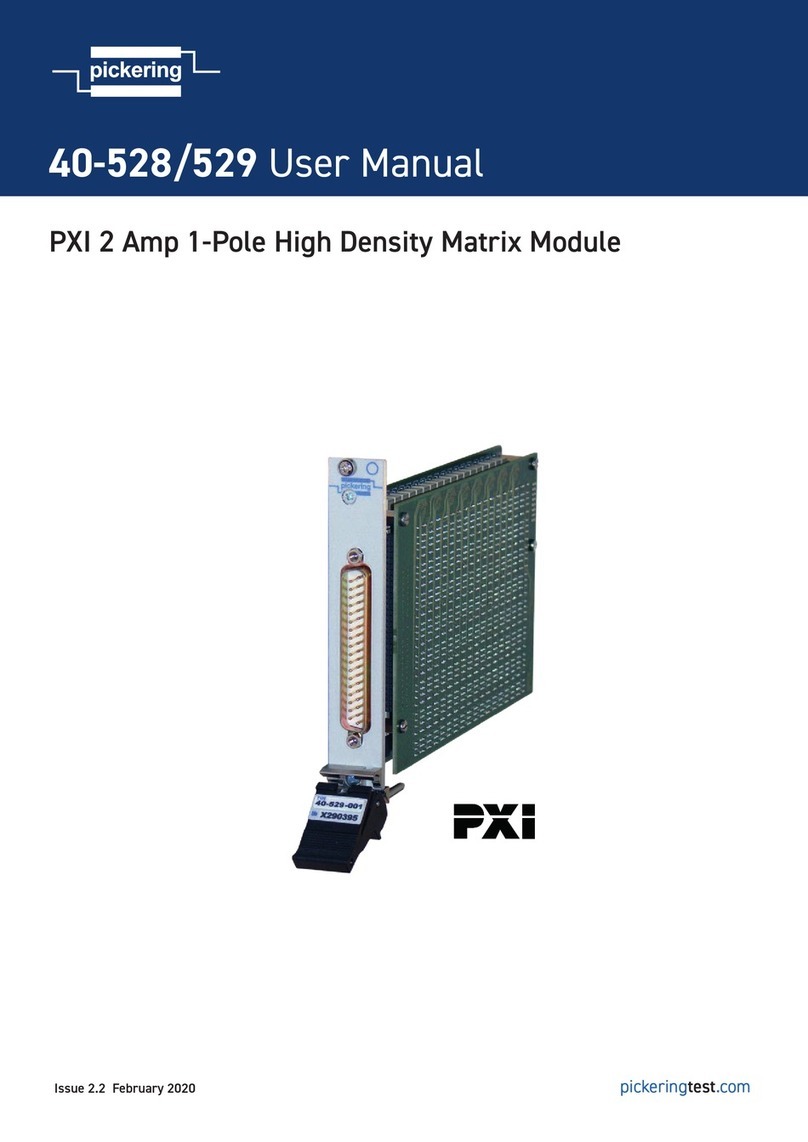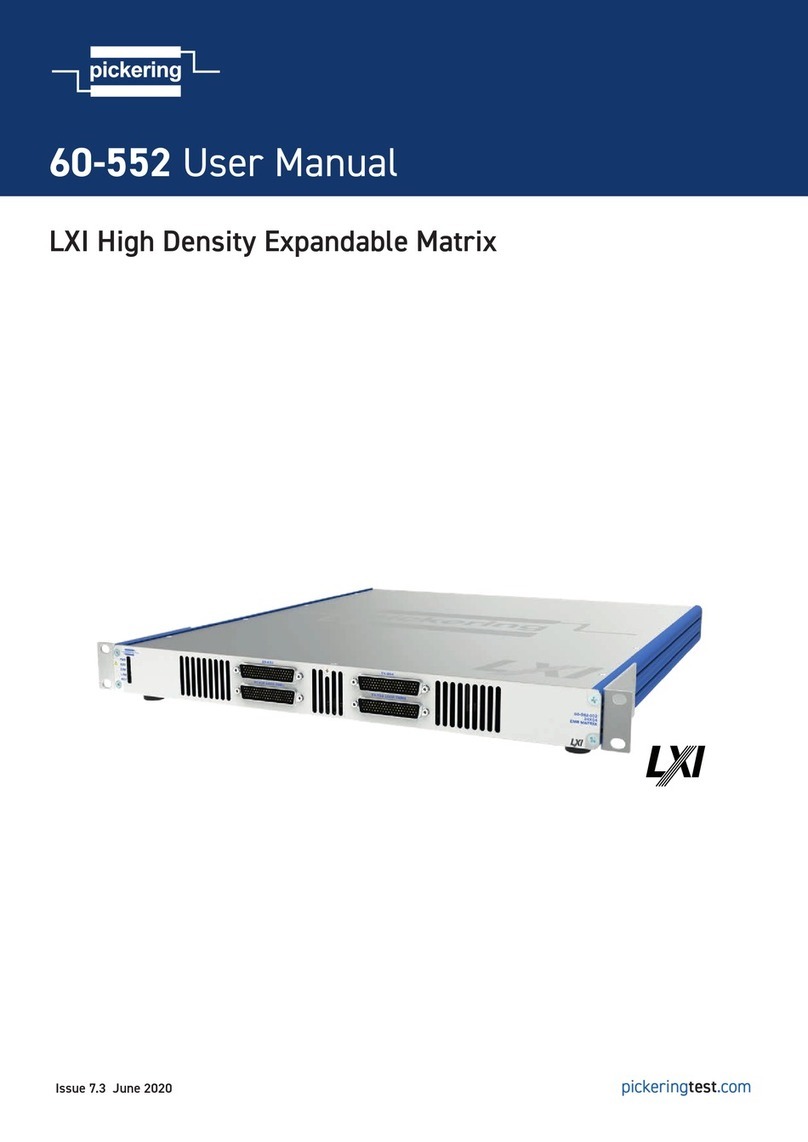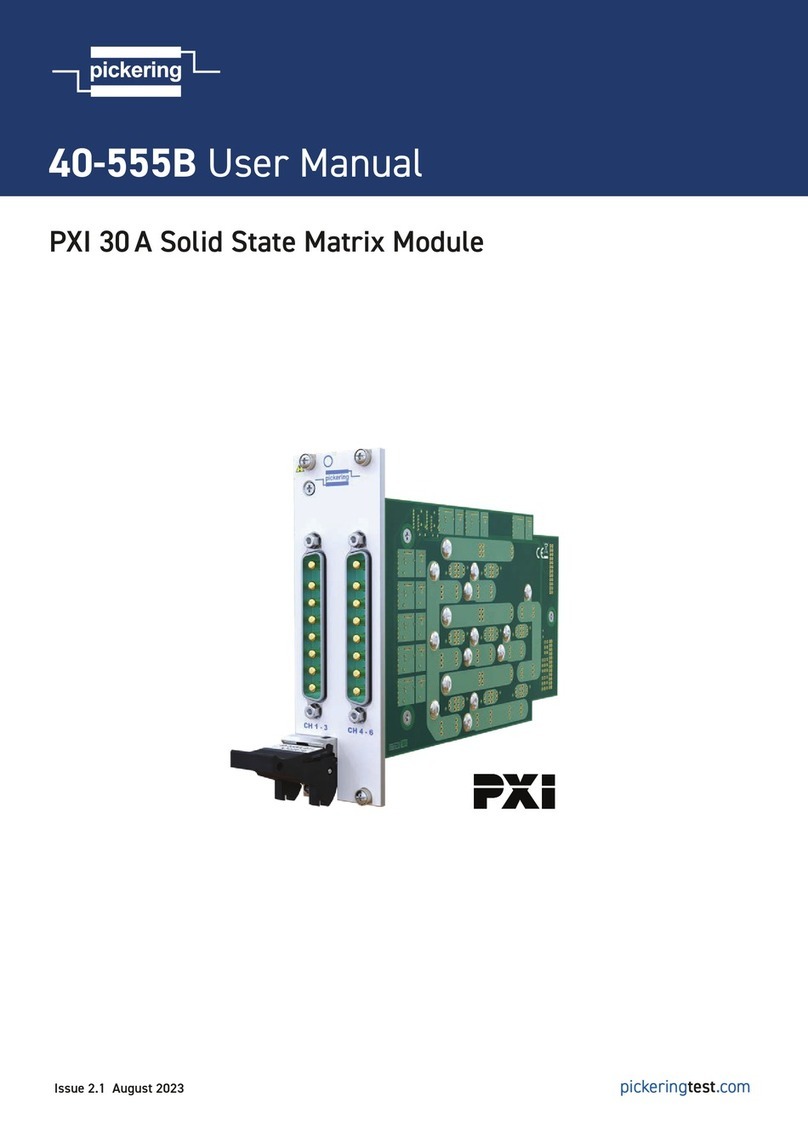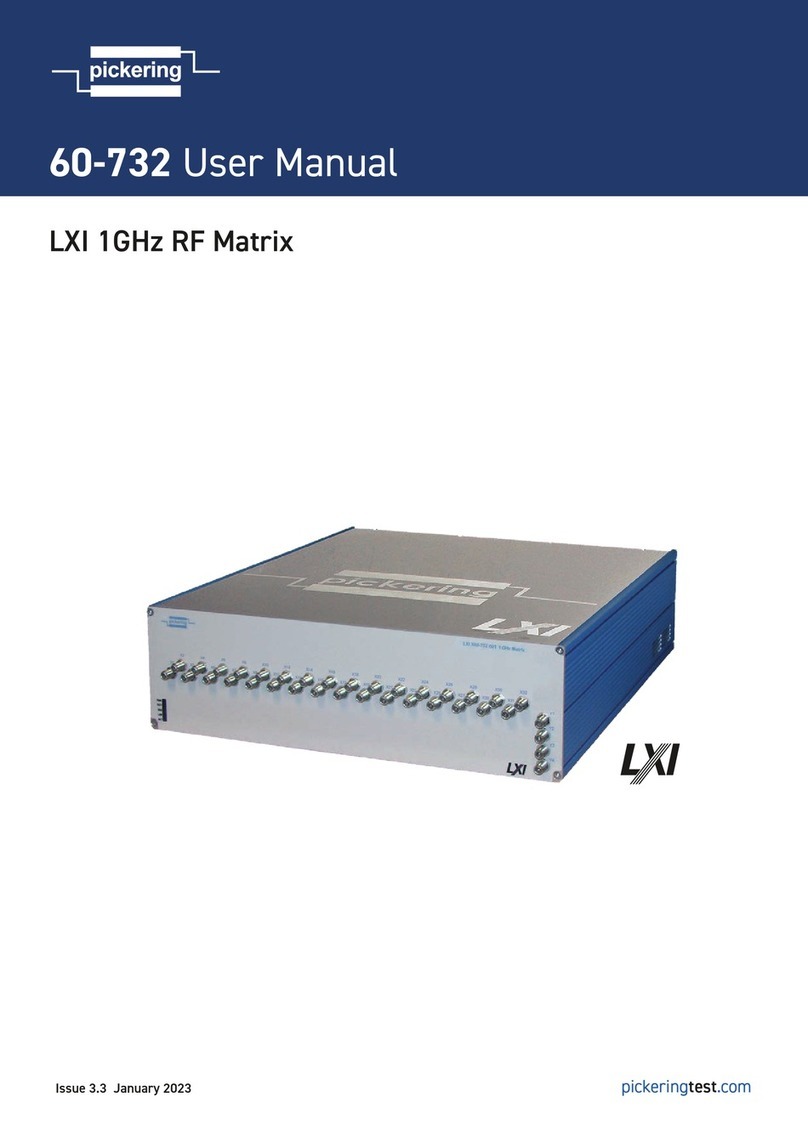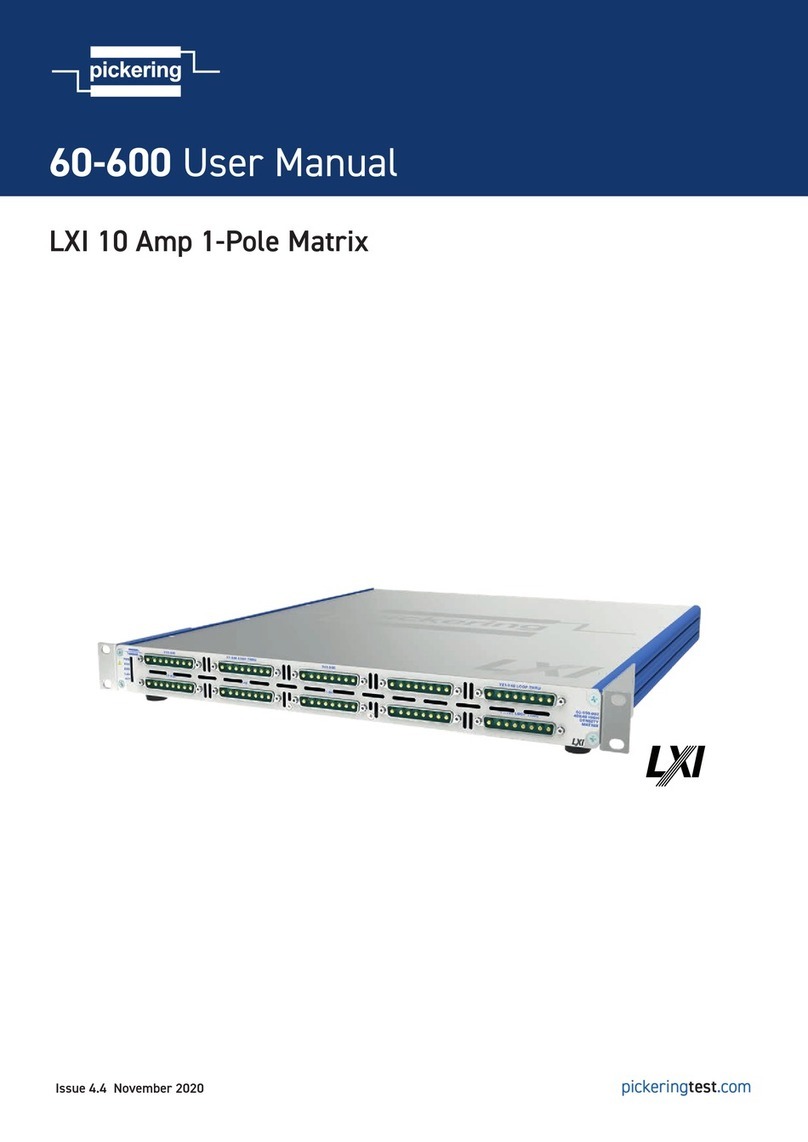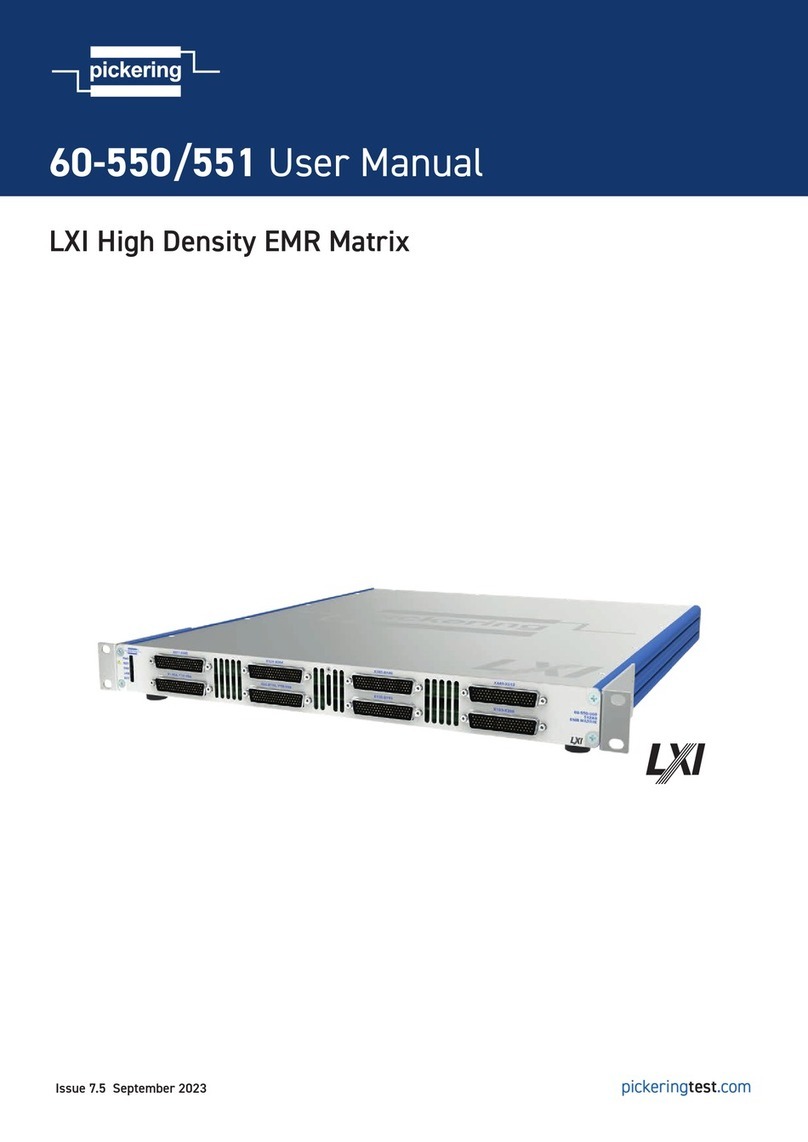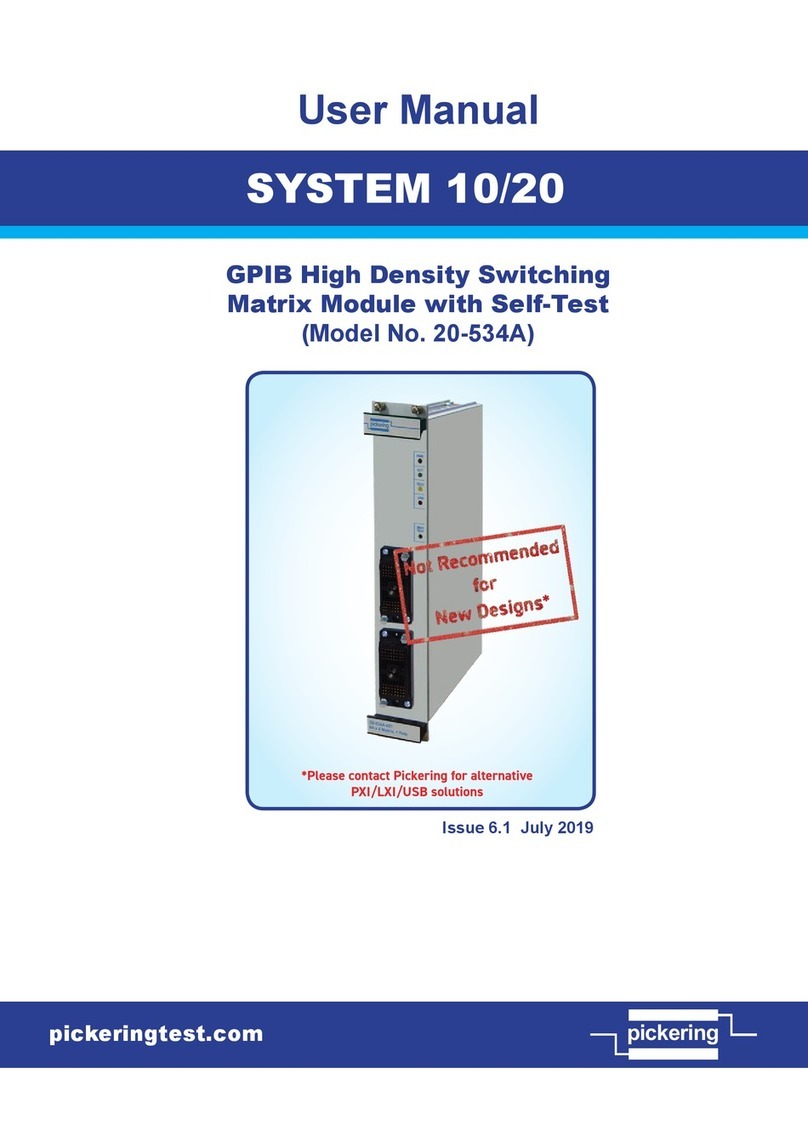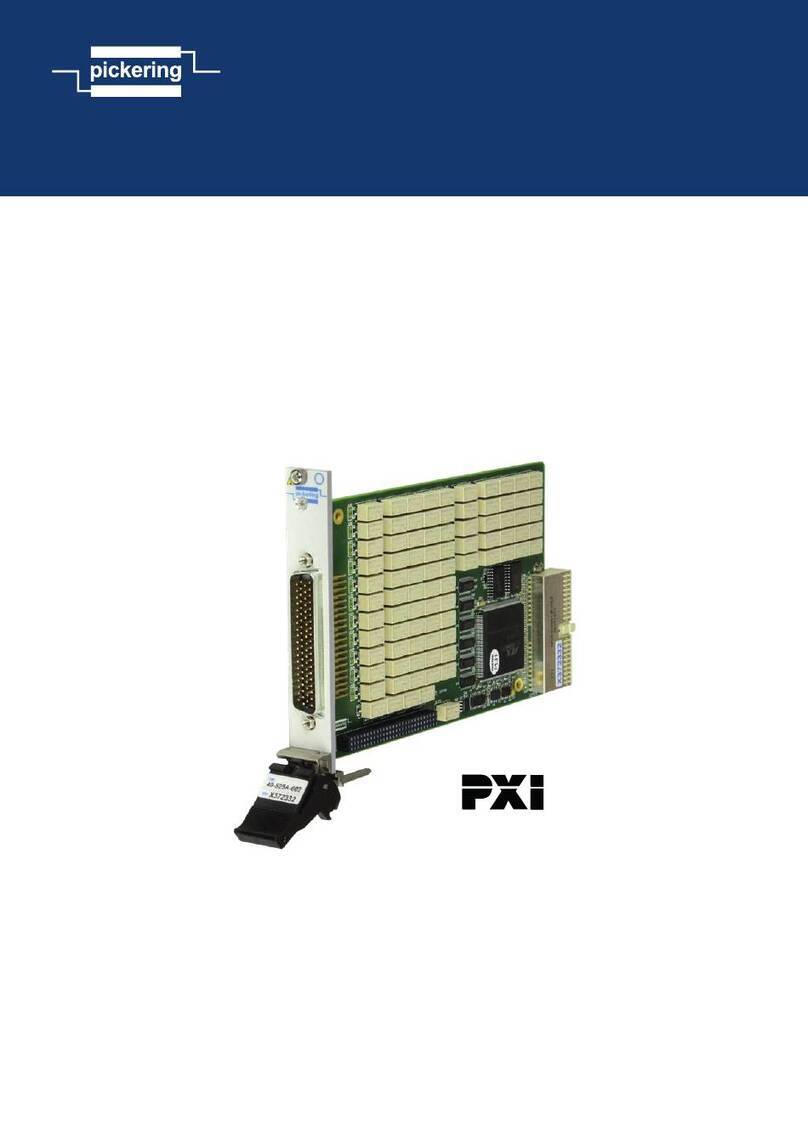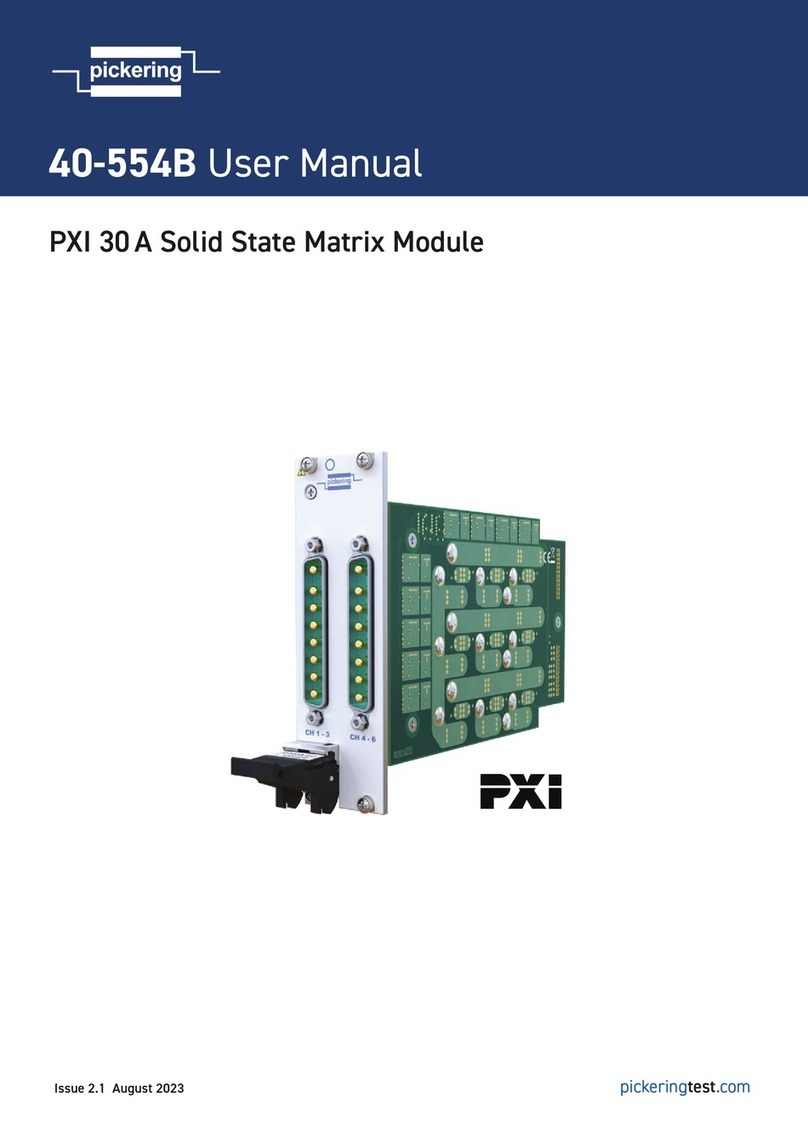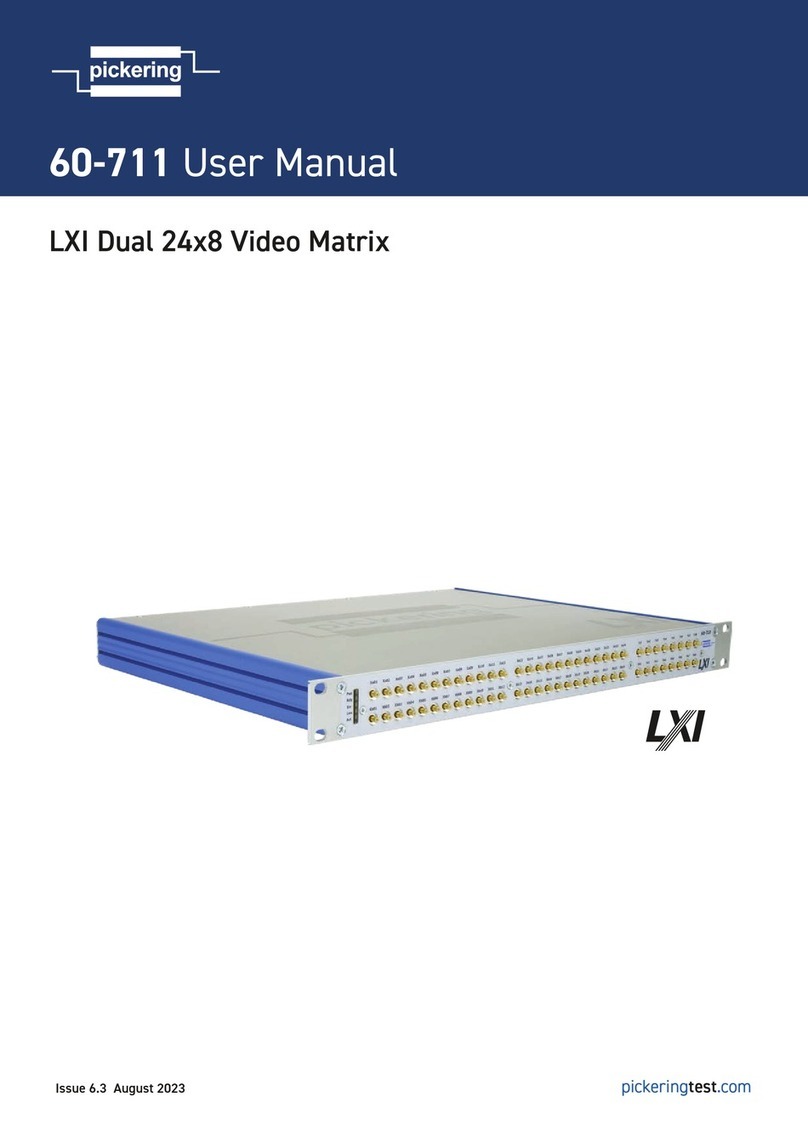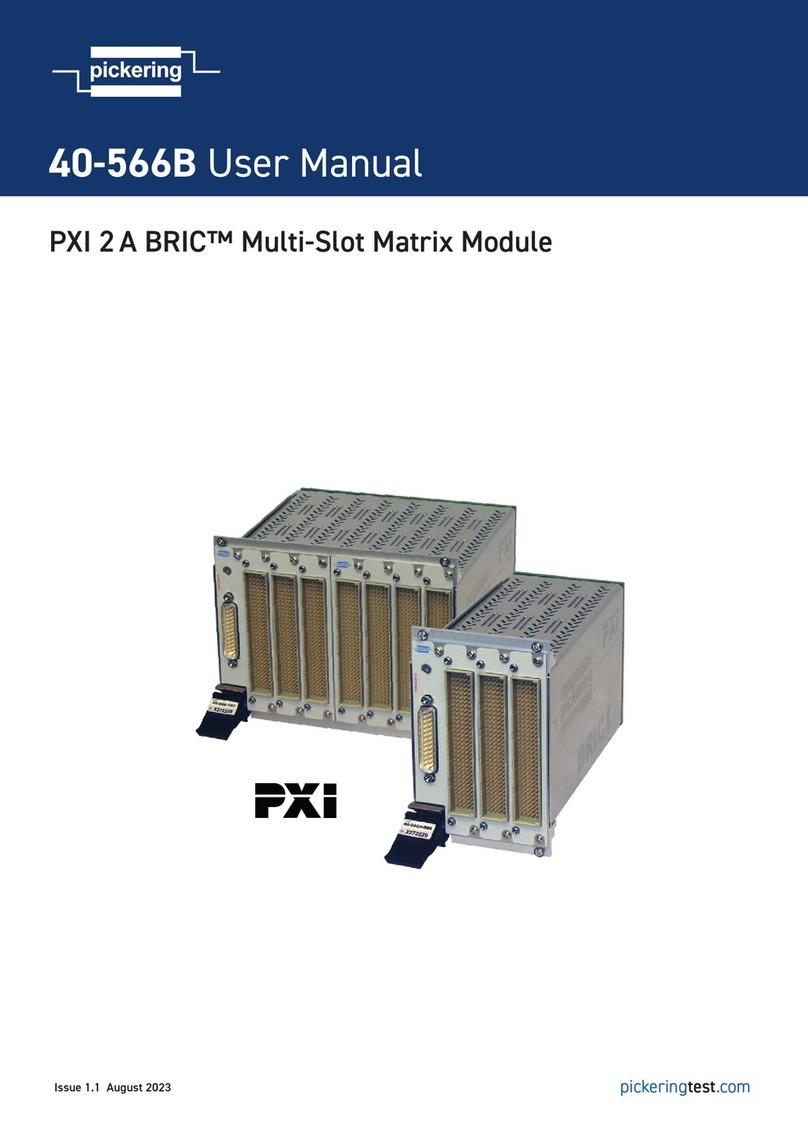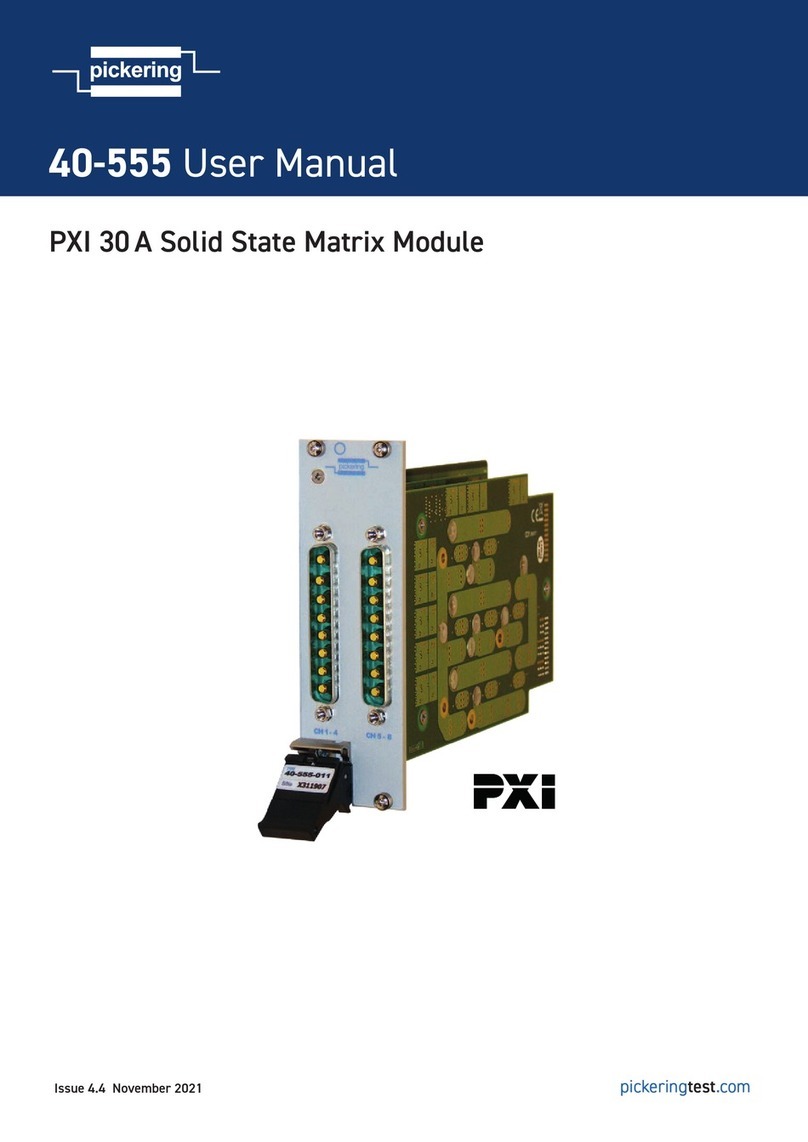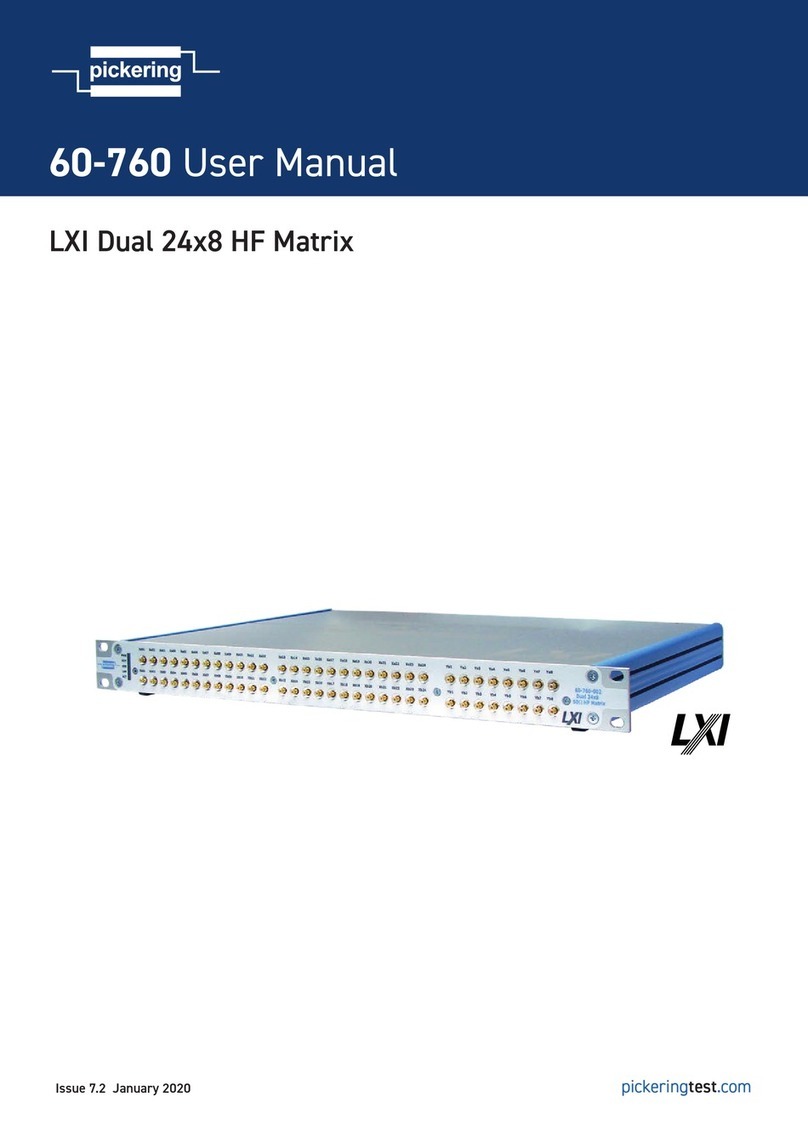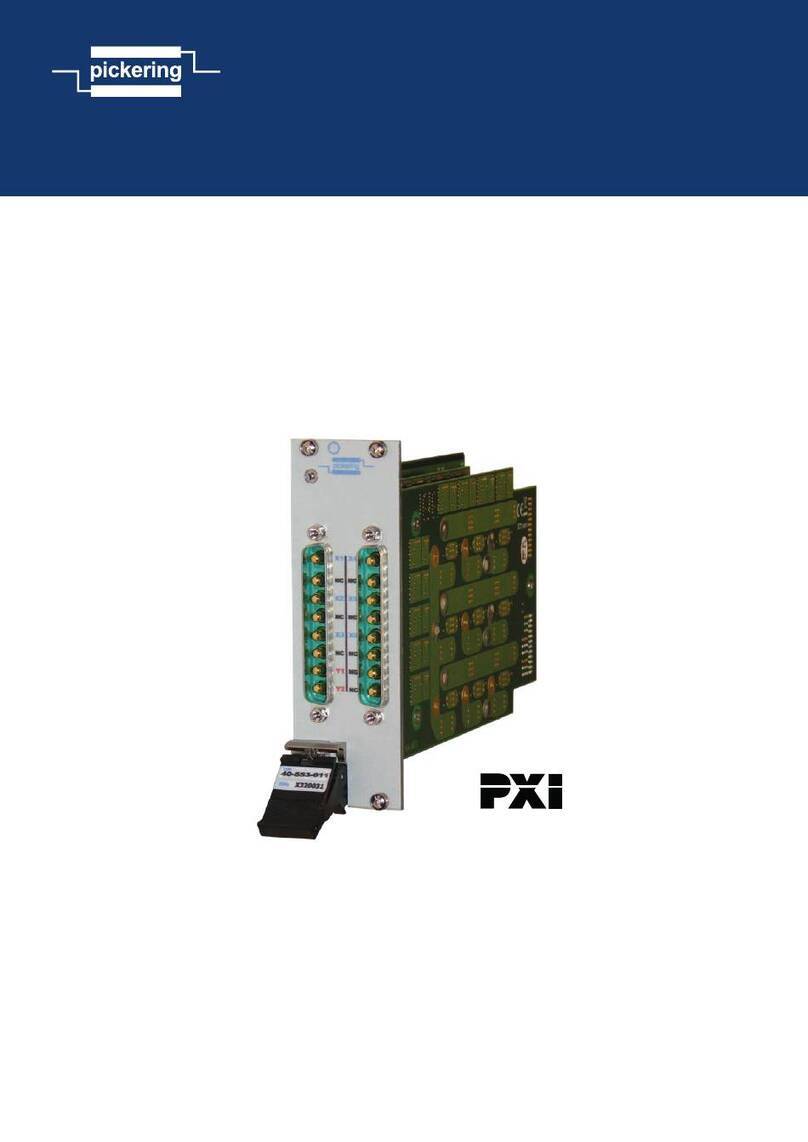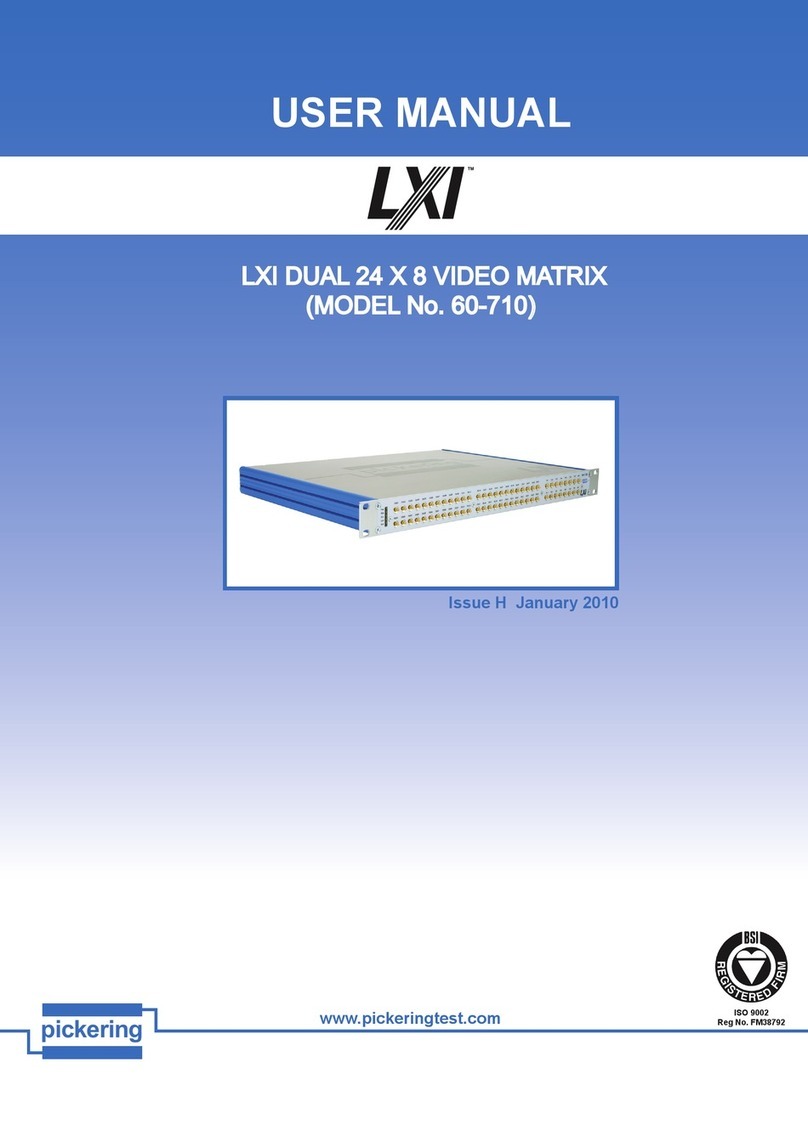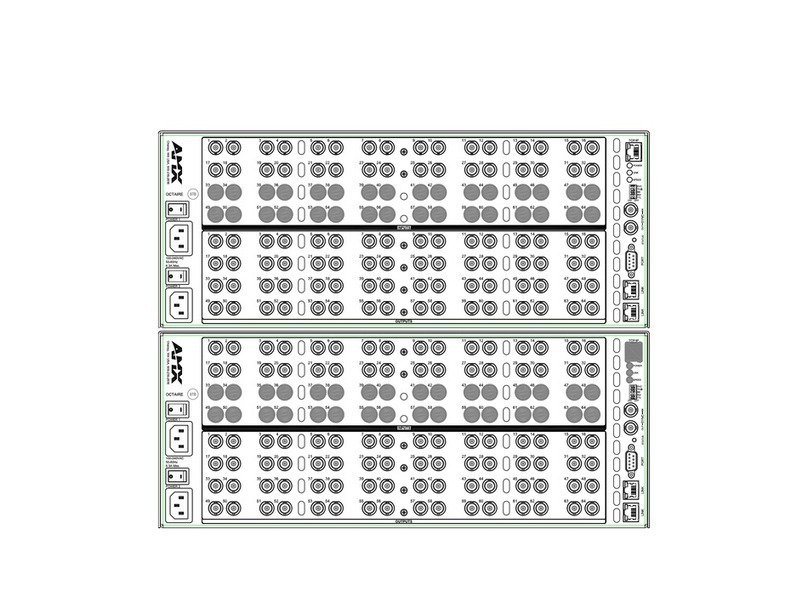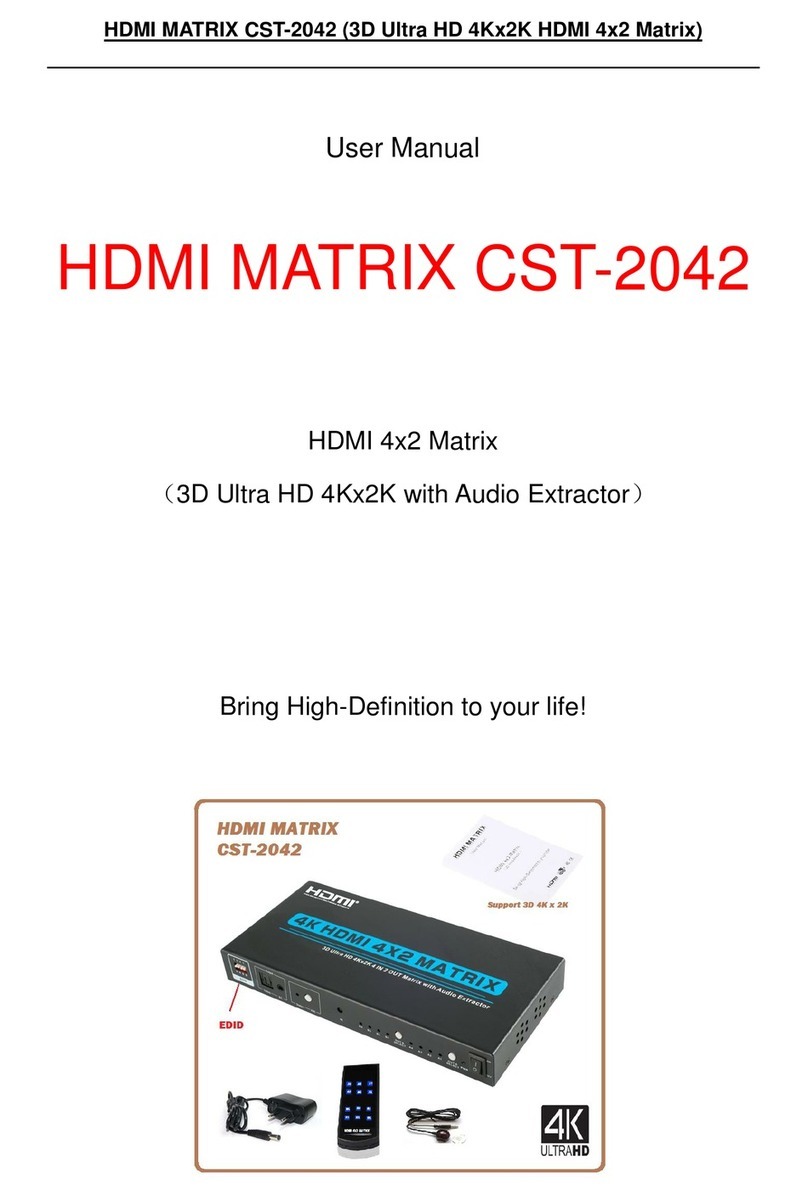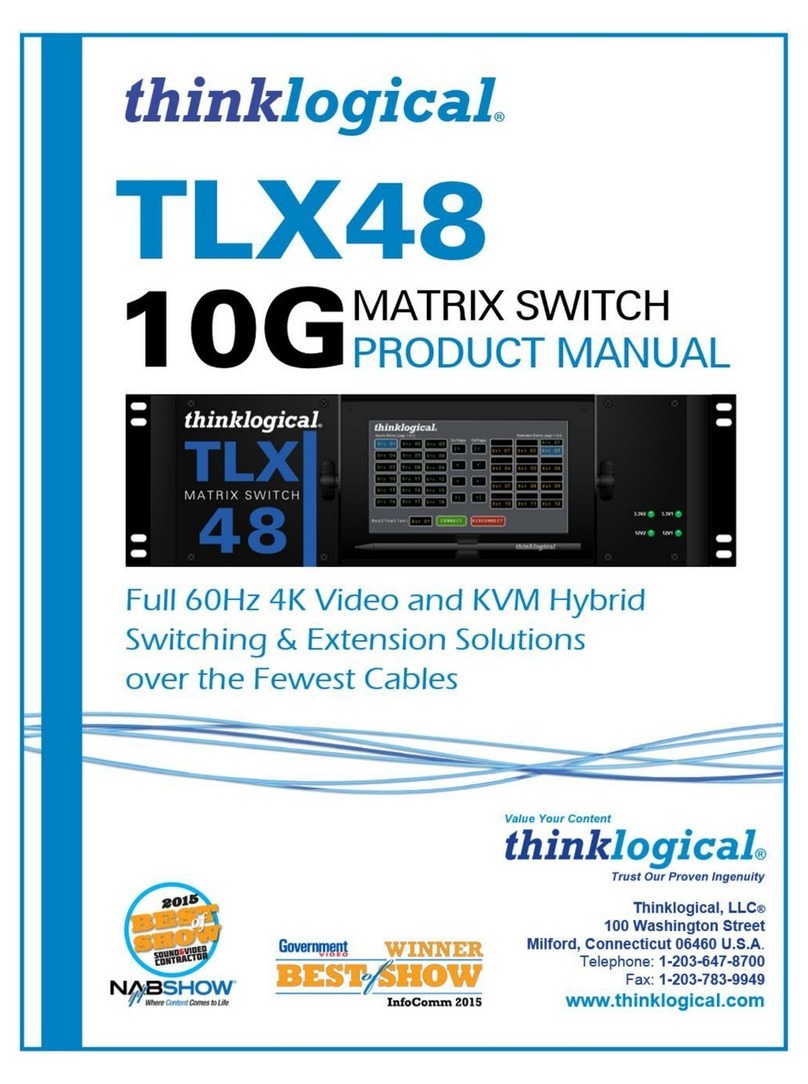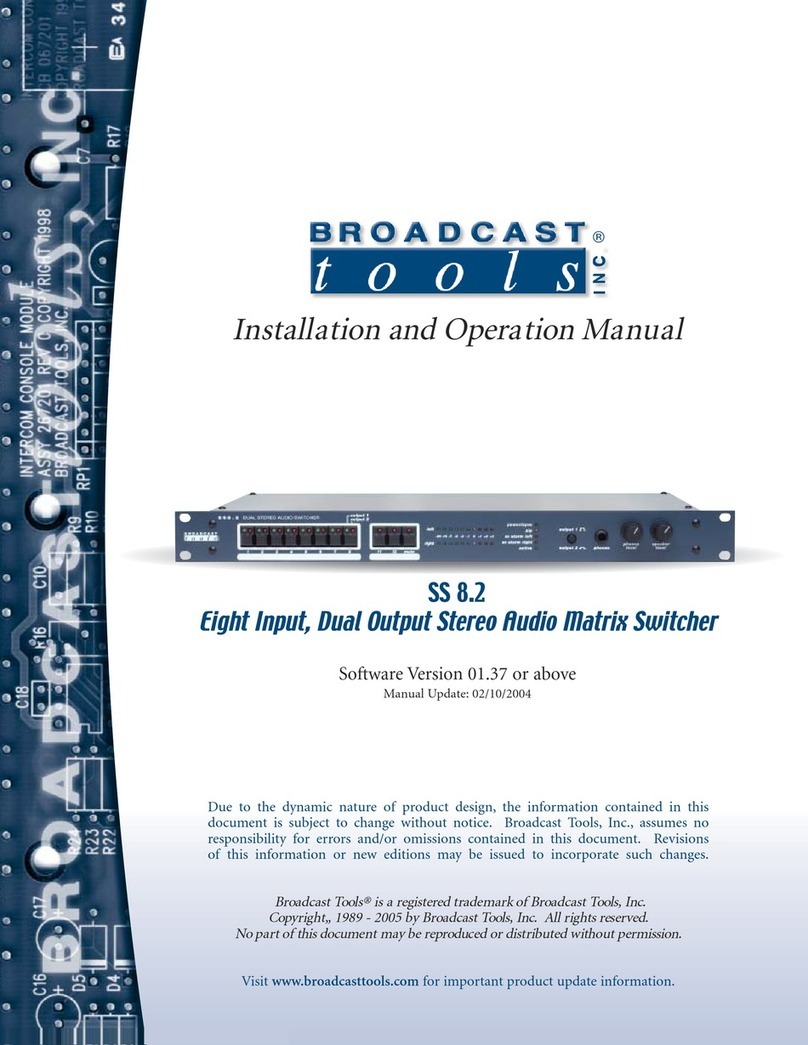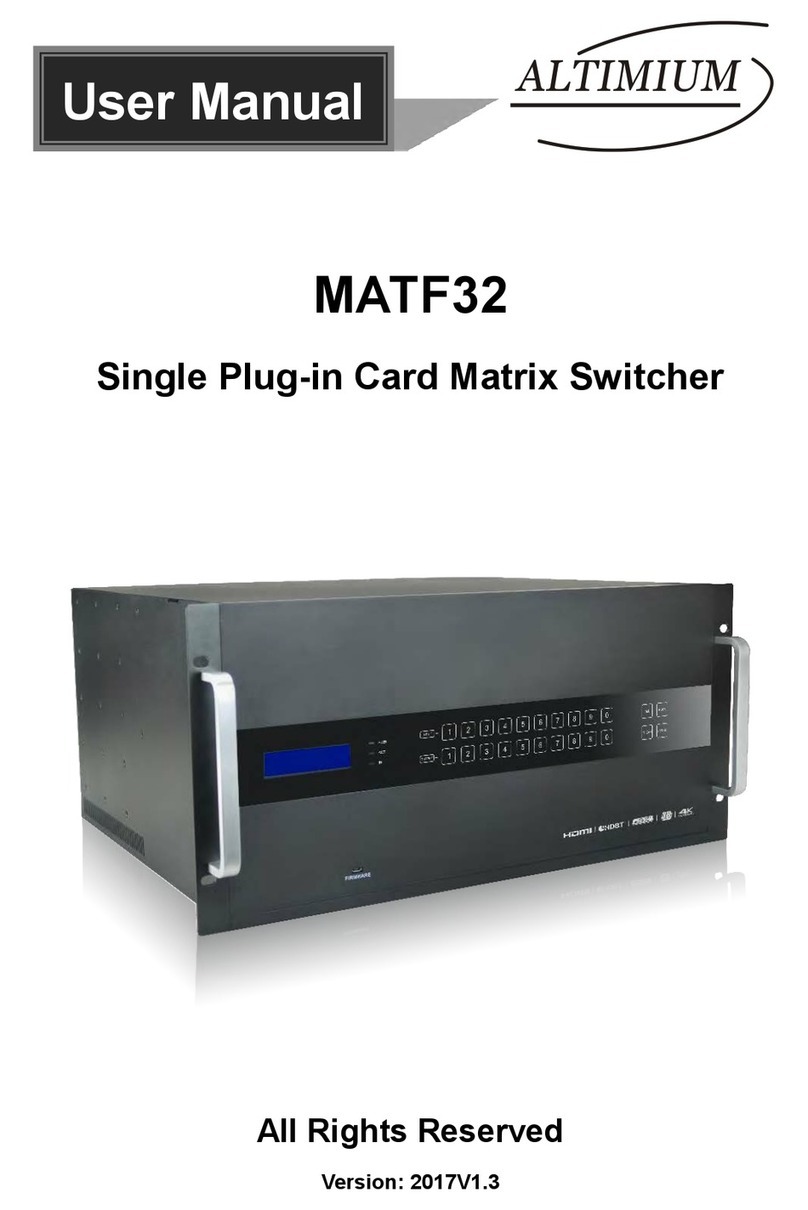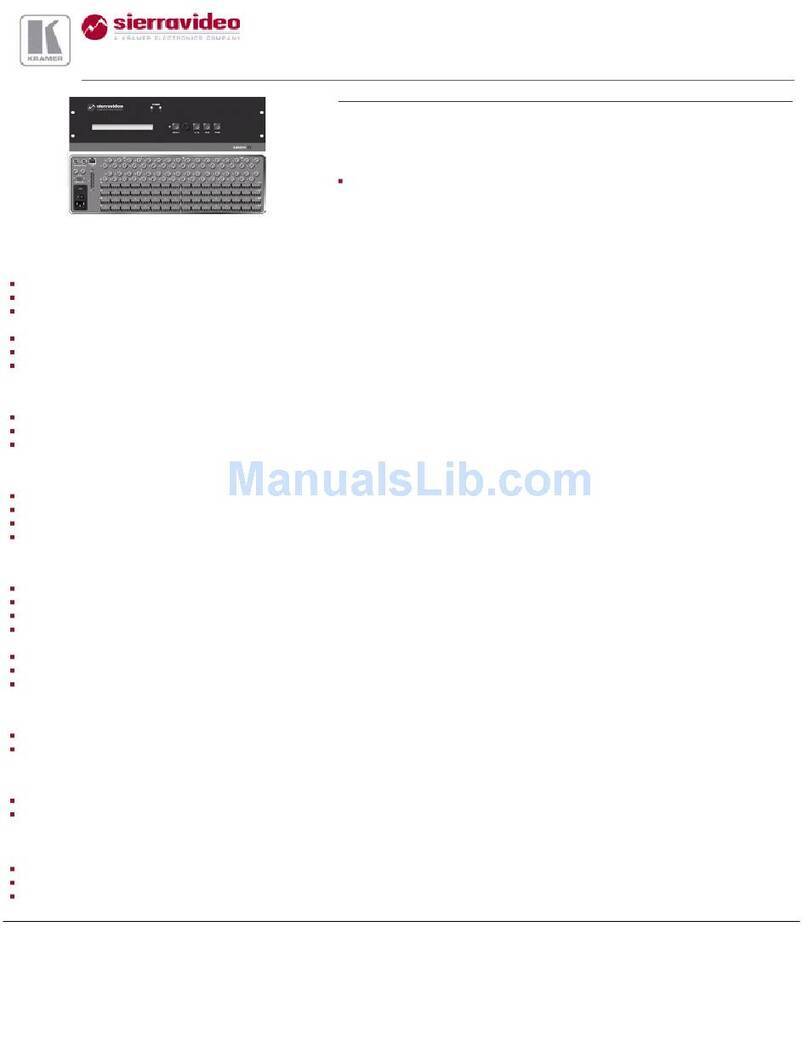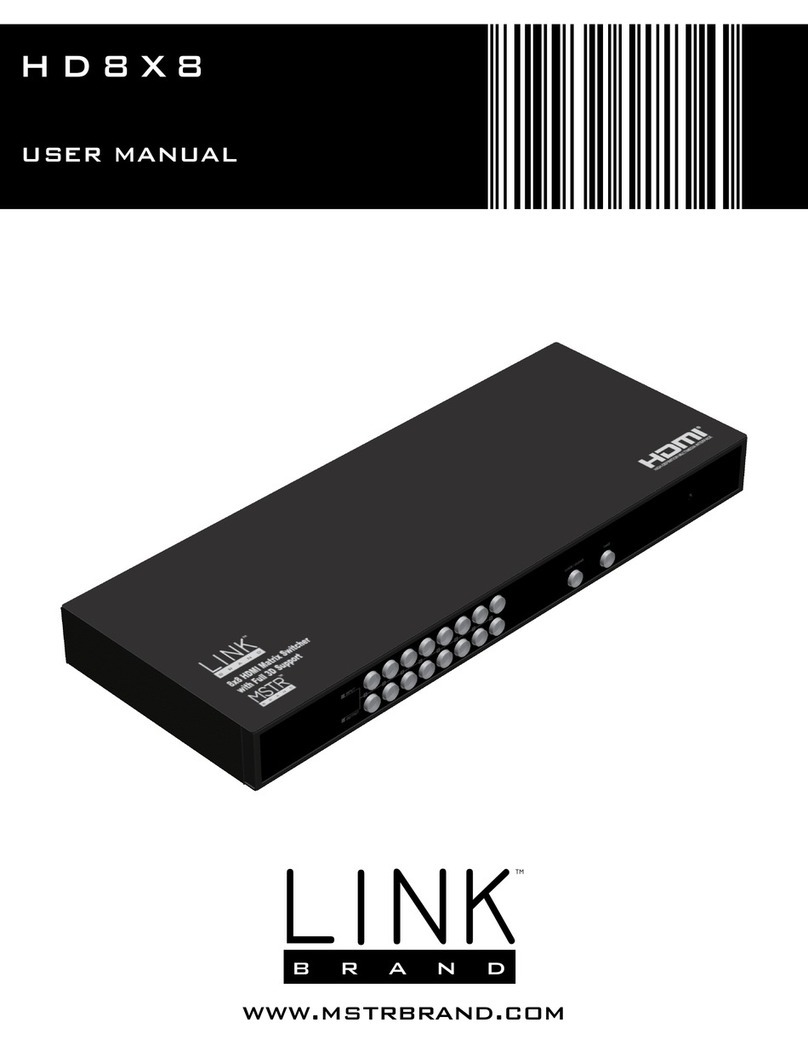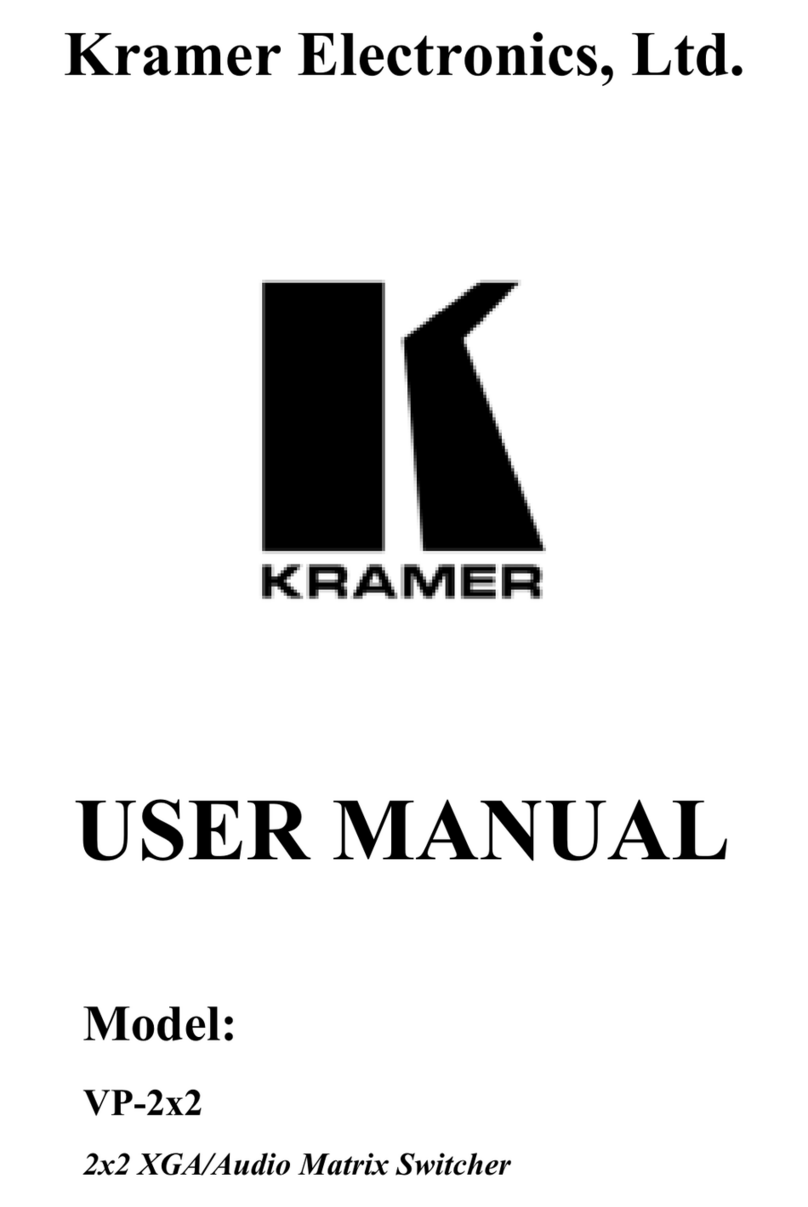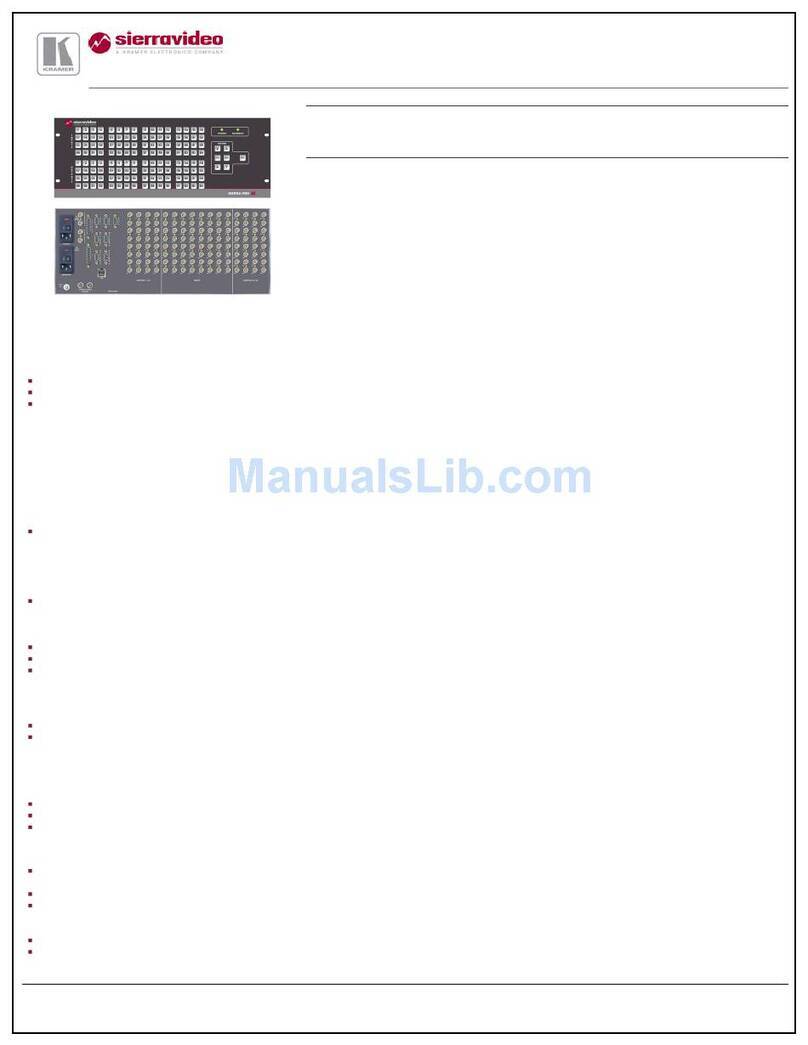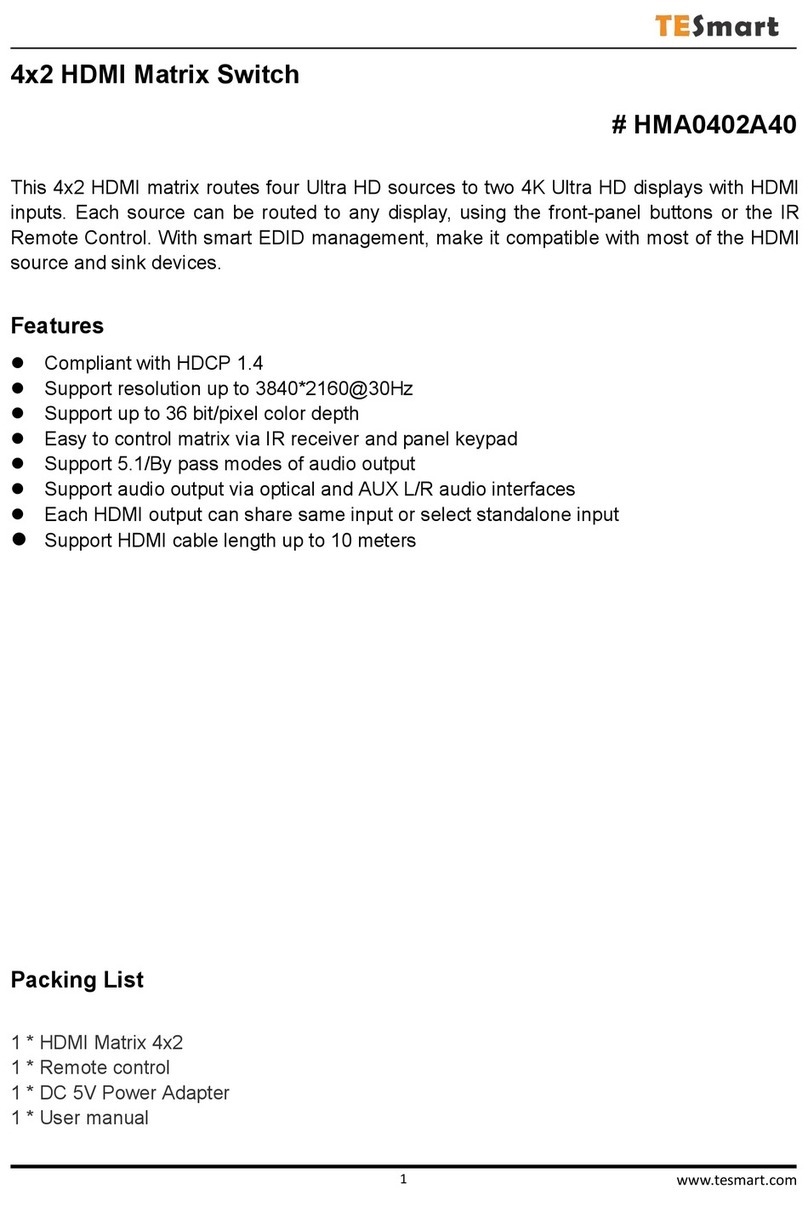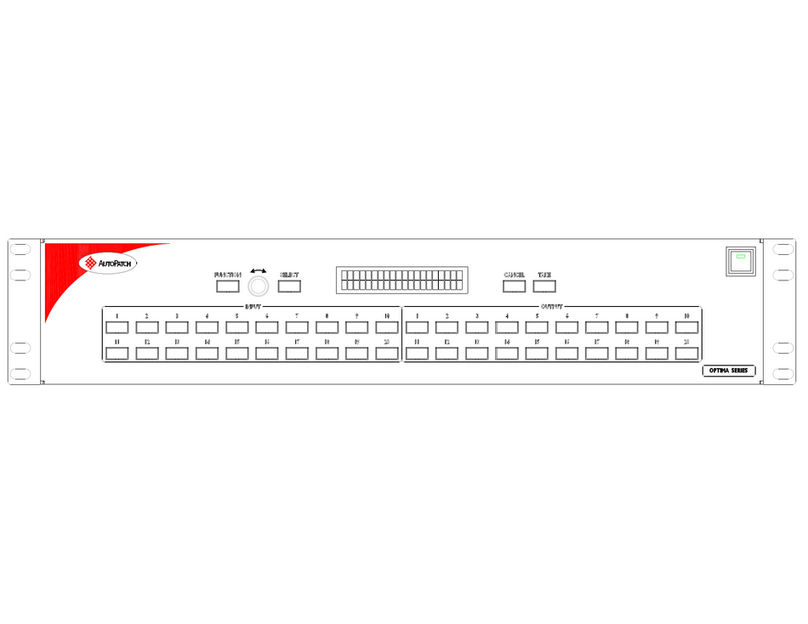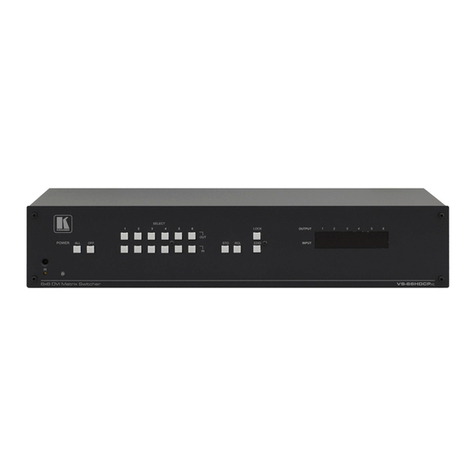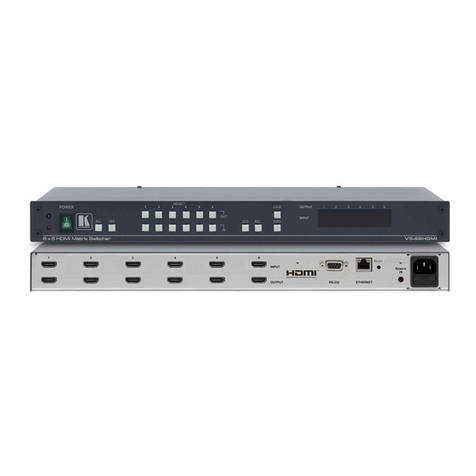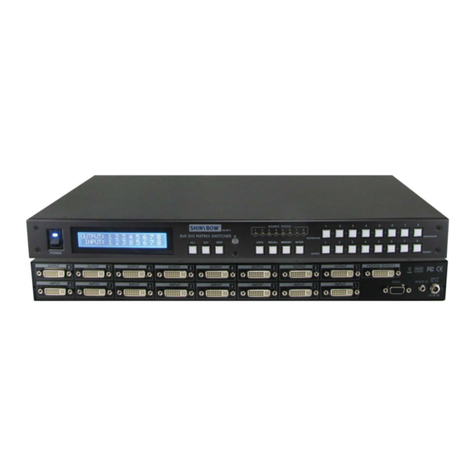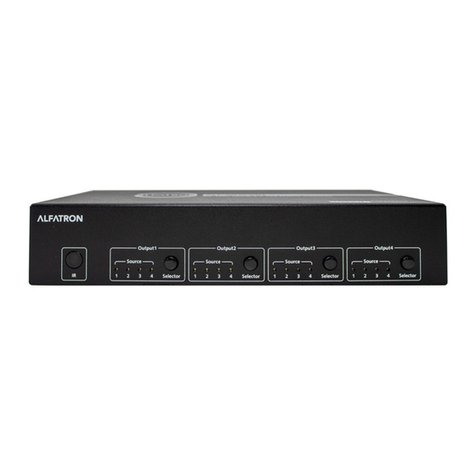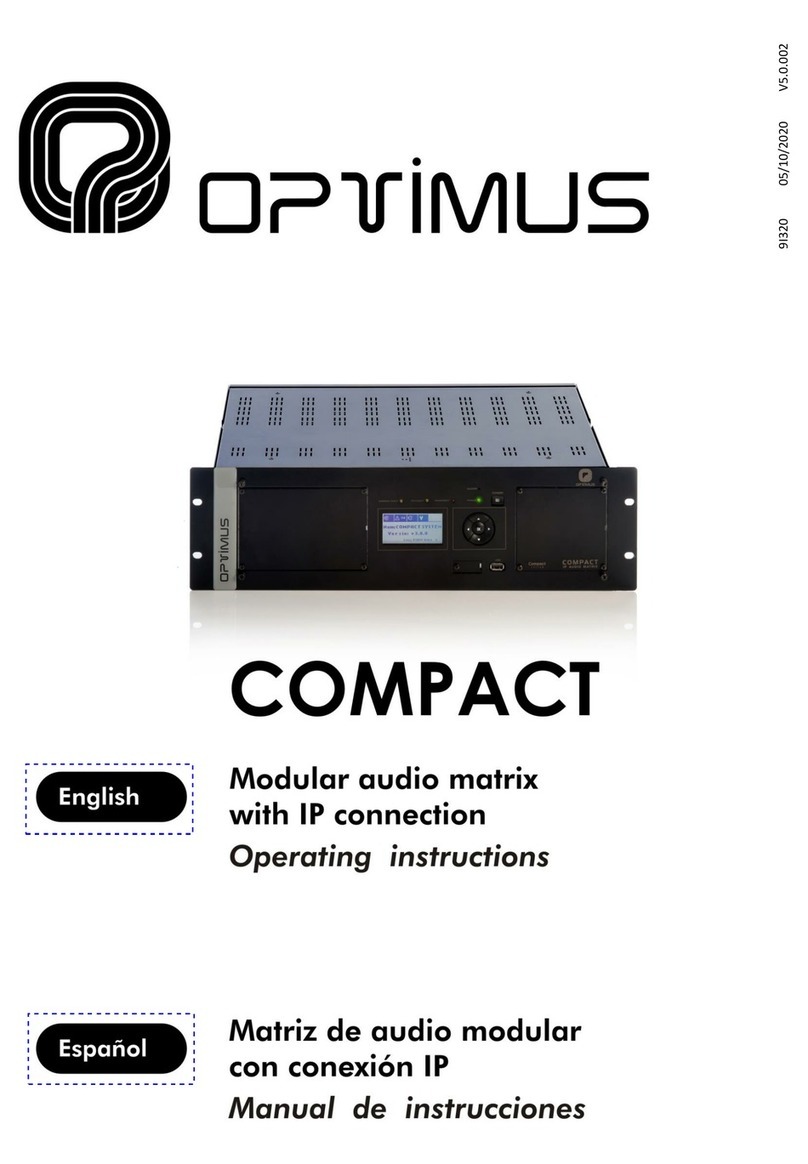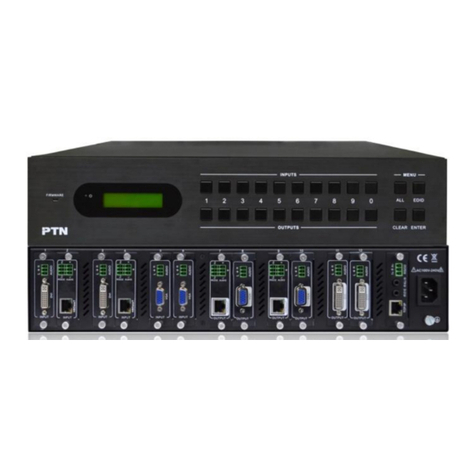
Page 1.2
SECTION 1 - TECHNICAL SPECIFICATION
LXI HIGH VOLTAGE 2-POLE MATRIX 60-310
pickering
LXI High Voltage Matrix – 60-310
pickeringtest.com
Specifications
Switching Specification
Switch Type: Rhodium Reed
Max Cold Switching Voltage:
Max Hot Switching Voltage:
750VDC Working /
1000VDC Typical*
500VDC*
Max Hot Switching Power: 10W
Max Carry Current: 1A
Path Resistance - On:
Path Resistance - Off:
<1Ω
>109Ω
Max Number of Simultaneously
Closed 2-Pole Crosspoints:
300
Operate Time:
Release Time:
<0.5ms
<0.5ms
Expected Life - Low Power Load:
Expected Life - Full Power Load:
>1x108operations
>5x106 operations
* For full voltage rating, signal sources to be switched must be fully
isolated from mains supply and safety earth.
Operating/Storage Conditions
Operating Conditions
Operating Temperature:
Humidity:
Altitude:
0°C to +55°C
Up to 95% non-condensing
5000m
Storage and Transport Conditions
Storage Temperature:
Humidity:
Altitude:
-20°C to +75°C
Up to 95% non-condensing
15000m
Safety & CE Compliance
All products are fully CE compliant and meet applicable EU
directives: Low-voltage safety EN61010-1:2010, EMC Immunity
EN61326-1:2013, Emissions EN55011:2009+A1:2010.
Mechanical Characteristics
Supplied with front panel ears to enable rack mounting on a shelf or
other rear support mechanism.
Dimensions: 2U high, full rack width, 500mm depth
3D models for all versions in a variety of popular le formats are
available on request.
Connectors
Signals via front panel connectors:
X connections: 50-pin male high voltage D-type
(one for every 25 pairs of X connections)
Y connections: 9-pin male high voltage D-type
For pin outs please refer to the operating manual.
Relay Type
The 60-310 is tted with high quality rhodium contact reed relays
specically designed for high voltage switching. These relays are
leaded types (not surface mount) so eld maintenance is greatly
simplied. Spare reed relays are built onto the circuit board to allow
easy maintenance with minimum downtime (60-310-102 has 1
spare relay, 60-310-202 has 2 spare relays, and 60-310-302 has 3
spare relays).
All reed relays are manufactured by our sister company Pickering
Electronics: pickeringrelay.com
Power Source
Universal AC mains supply, 90-120/200-240V 50-60Hz
Power Inlet: Male IEC connector
Power Rating: 100VA maximum
Fuse Rating: 5A, 250V
LAN Interface
Compliant to LXI Standard 1.4, the 60-310 has a 1000Base-T
Ethernet Interface via a standard RJ-45 connector mounted on the
rear panel with an LCD display showing the unit’s IP address.*
*Note: Legacy units may not have 1000Base-T support or be tted
with an LCD display.
“Hot” Switching
This is when the load is switched with the high
voltage source applied. Hot switching may generate
considerable RFI, both within the switching module and on
interconnecting wiring. Care must be taken to suppress or
shield all cabling.
Note that any precaution which adds extra capacitance to
a cable should be taken with great care, even a very small
capacitance at high voltages can cause very large inrush
current through the module resulting in possible switch
weld and excessive RFI.
The 60-310 modules include extensive built-in RFI
suppression circuits that minimize RFI and surge problems.
“Cold” Switching – The Preferred Option for Reliability & Long Life.
With cold switching, the relay is operated before the high voltage
source is applied. In this case the maximum carry current is much
greater, also there will be much less stress on the reed relays, resulting
in improved reliability and life.
Most high voltage sources include a soft start facility which reduces the
likelihood of generating RFI or temporary over-voltage.
High voltage switching modules are often used for isolation testing
applications (e.g. cable, transformer or semiconductor isolation tests),
in these cases, cold switching is nearly always the preferred option to
reduce the risk of high voltage transients that may cause premature
breakdown.
Overview of “Hot” & “Cold” Switching Techniques
